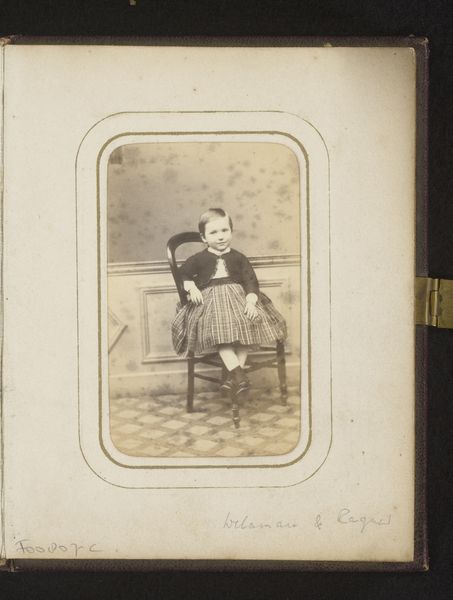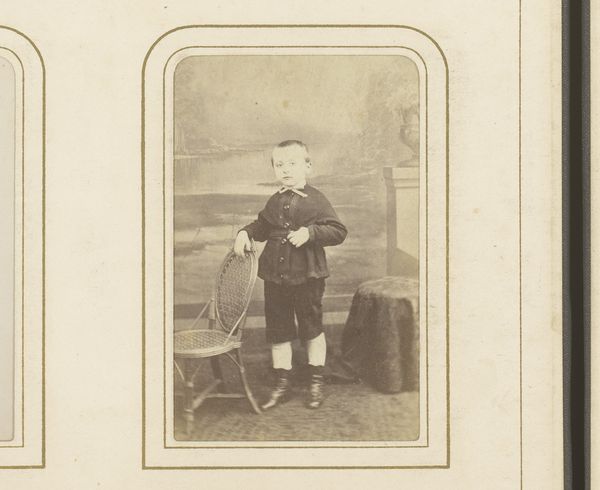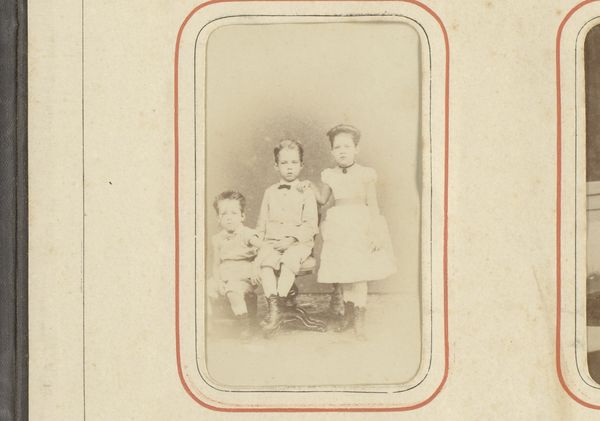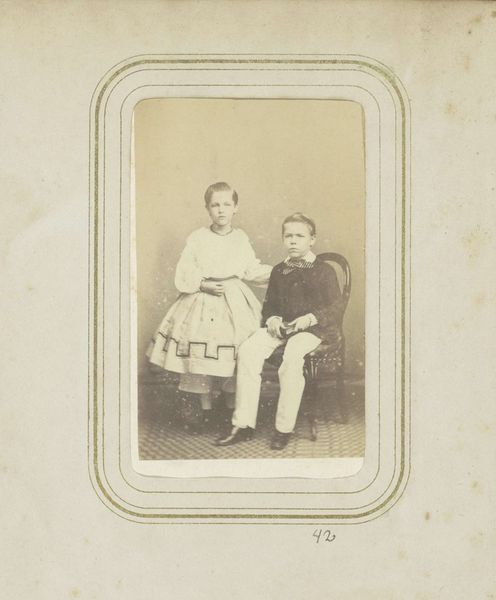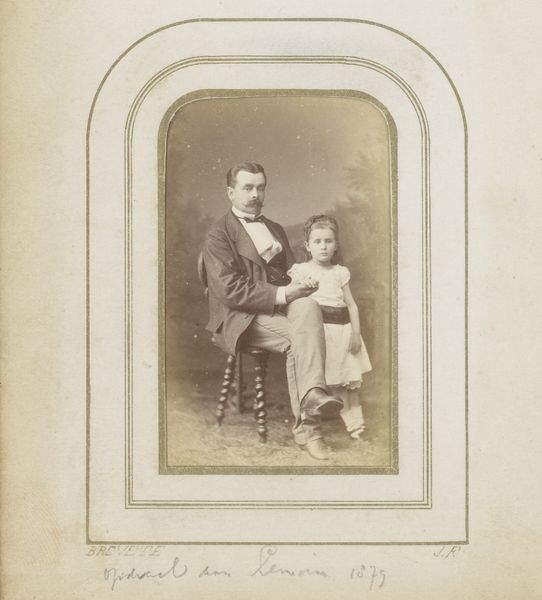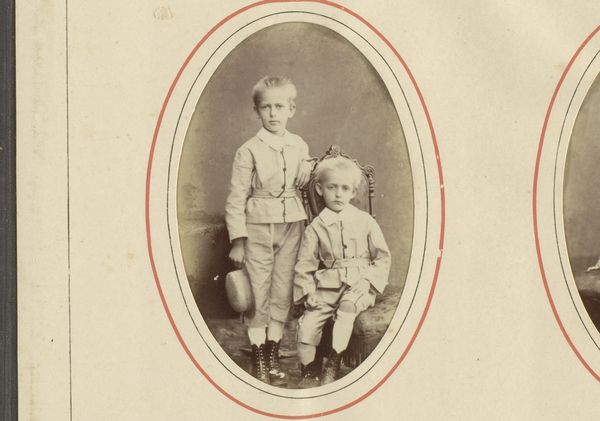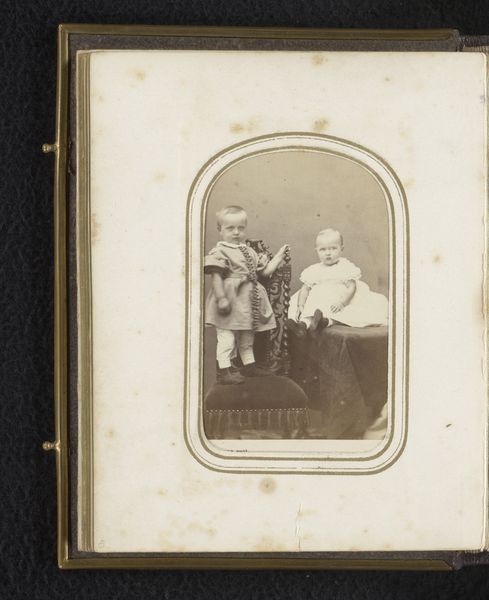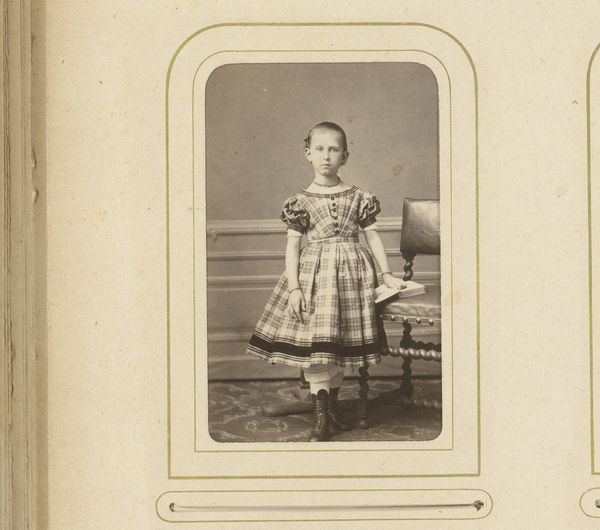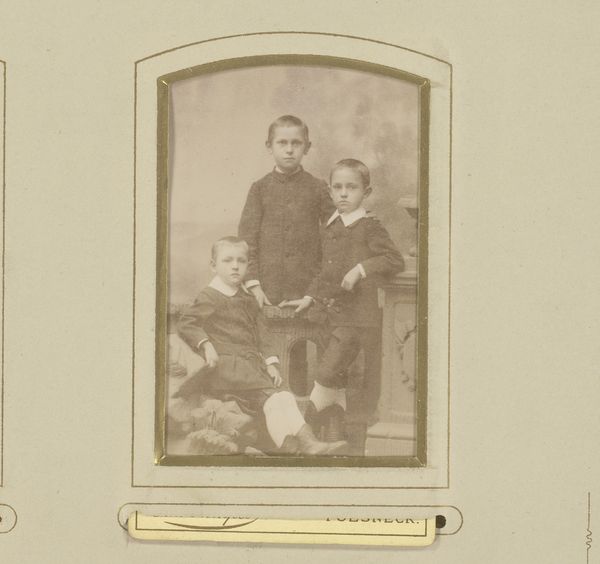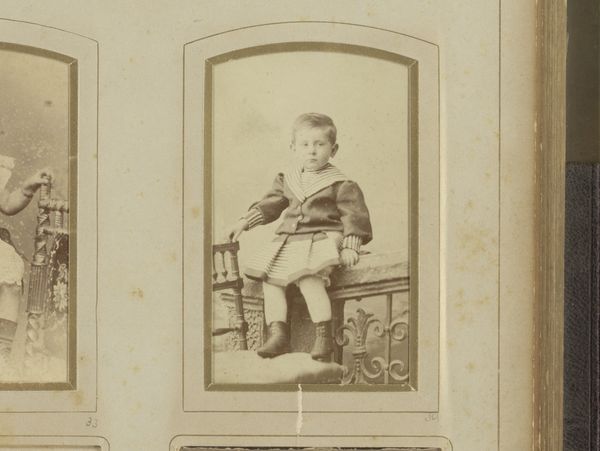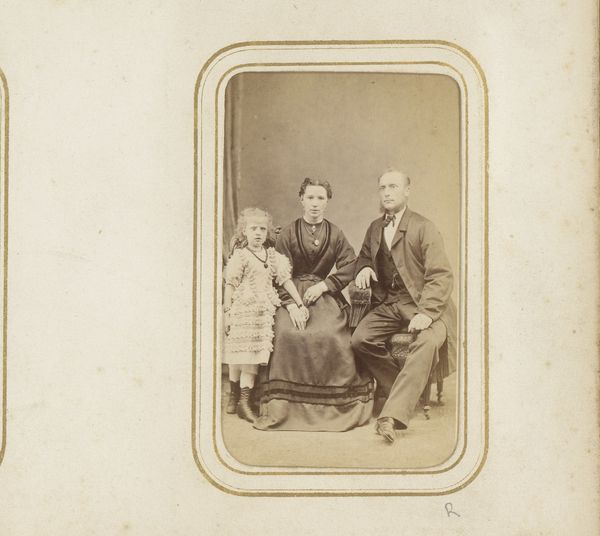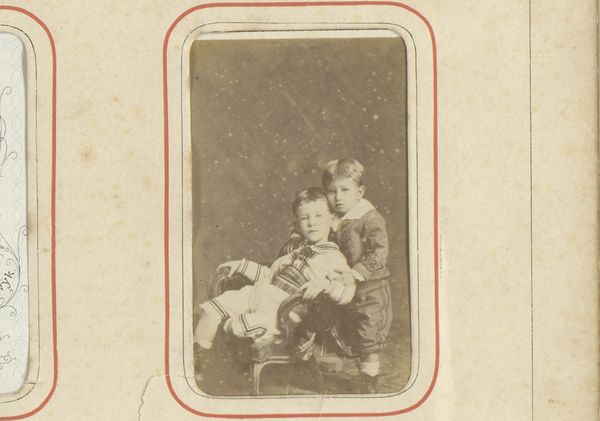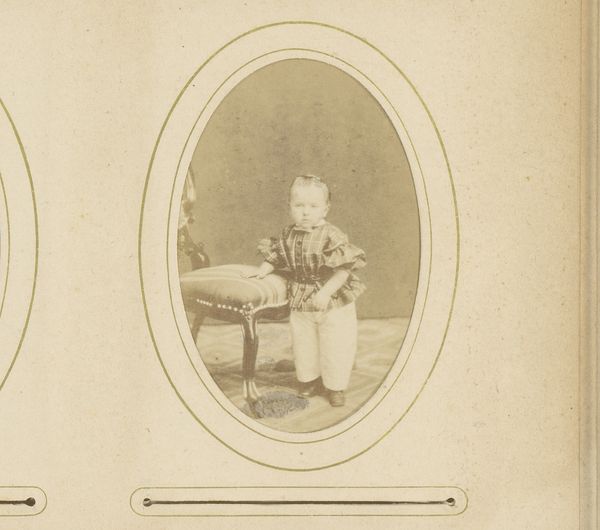
photography, gelatin-silver-print
#
portrait
#
photography
#
historical photography
#
group-portraits
#
gelatin-silver-print
#
19th century
Dimensions: height 83 mm, width 51 mm
Copyright: Rijks Museum: Open Domain
Curator: This gelatin-silver print, dating from around 1870-1880, offers us a glimpse into the lives of two young boys. It's entitled "Portrait of two boys, indicated as F.A.F. and F.H. de Bruine," attributed to W.J. Olland & Son. Editor: What strikes me most is the contrast in their expressions. One, presumably the elder, has a guarded, almost adult gaze, while the other radiates pure childhood… mixed with a hint of "I’d rather be anywhere else." Curator: Absolutely, it captures that tension so common in formal portraits. During this era, photography was increasingly accessible but still held a certain weight, influencing how subjects presented themselves. These images became vital representations of family and social standing. Editor: And the backdrop, it feels simultaneously generic and revealing. That little table, draped so deliberately, speaks to the staging that went into these photos, the performance of being. But the eyes... those I feel I can really connect with. What about the clothing choices for me as an observer? It definitely catches my interest! Curator: Costume played a major role in these portraits! The elder boy's formal suit contrasts sharply with his younger brother's lighter attire. This contrast could imply age, status, even personality differences meticulously planned by their parents. Editor: It makes you wonder about the unseen stories, doesn’t it? Were they close? Was this a power dynamic playing out in miniature? Photography has such an interesting position between fact and interpretation, even as something so seemingly truthful. It captures a single moment but hints at an entire universe. Curator: Precisely. The technical mastery evident in the print itself—the tonal range, the detail captured even in shadow—underscores photography’s burgeoning artistry in that period. It serves as a time capsule. Editor: Yes, seeing the humanity peek through stiff poses and outdated attire can also serve as a gentle invitation. I have more empathy with the period as an active and participatory citizen!
Comments
No comments
Be the first to comment and join the conversation on the ultimate creative platform.

